Based on a lecture given to the Department of Engineering, The University of Cambridge, UK, on October 31st 2023:
‘Towards Mankind’s Survival (1) 12,900 years ago. The Younger Dryas Meteorite Impact; A new and testable hypothesis‘*
Introduction
In February 2018, Graham was kind enough to make my 2012 book, ‘Hongshan Jade Treasures’, on jade and other carvings from China’s finest (and totally neglected) Neolithic Culture, Book of the Month, on this blog. In Chapter 6 of that book (copies of which are still available on request), I present some of the evidence that shui jing glass, one of the media used for classical Hongshan iconography, is a unique form of tektite (i.e. silica glass ejected from a meteorite impact). I also touched on suspicions that had led me to propose that it may have resulted from the impact of a dumbell-shaped bolide on inner Mongolia. I postulated that this bolide (nick-named ‘Dumbo’) broke on hitting the atmosphere into two main pieces, respectively 200 and 250 metres in diameter, producing the twin craters that I had first found in 2009 on Google Earth, located at 114.24E, 44.24N in Inner Mongolia close to the Mongolian border (Figures 1 & 2). On visiting the craters in 2010 with my friend Josef Muller, it was obvious that there was a piece missing from the Southern crater, which is evident in Figures 2a and b. This led me to postulate that a third (waist) piece, named by me ‘JoBo’, was fractionally retarded, and bounced off the already exploding Southern crater. For a quick reminder of what I am talking about, please also see the above link, and also the third part of my 2016 YouTube video: https://www.youtube.com/watch?v=L-Qdpzo-rjo.
* Incidentally, on the same afternoon of October 31st 2023, I gave a second lecture to the same audience in Cambridge entitled ‘Towards Mankind’s Survival (2) 1984 – 2024. Surviving a Human Virtual Meteorite Impact’. This was based on my latest book, written with Dr David Grimes and entitled ‘Vitamin D and the Great Biology Reset’; see www.dgreatbiologyreset.com from which website pdf files can be downloaded free of charge, or hard copies of the book in English or Italian ordered for £20 a copy plus p & p!. But I digress.
Let me show you Google images of a pair of craters in Inner Mongolia…
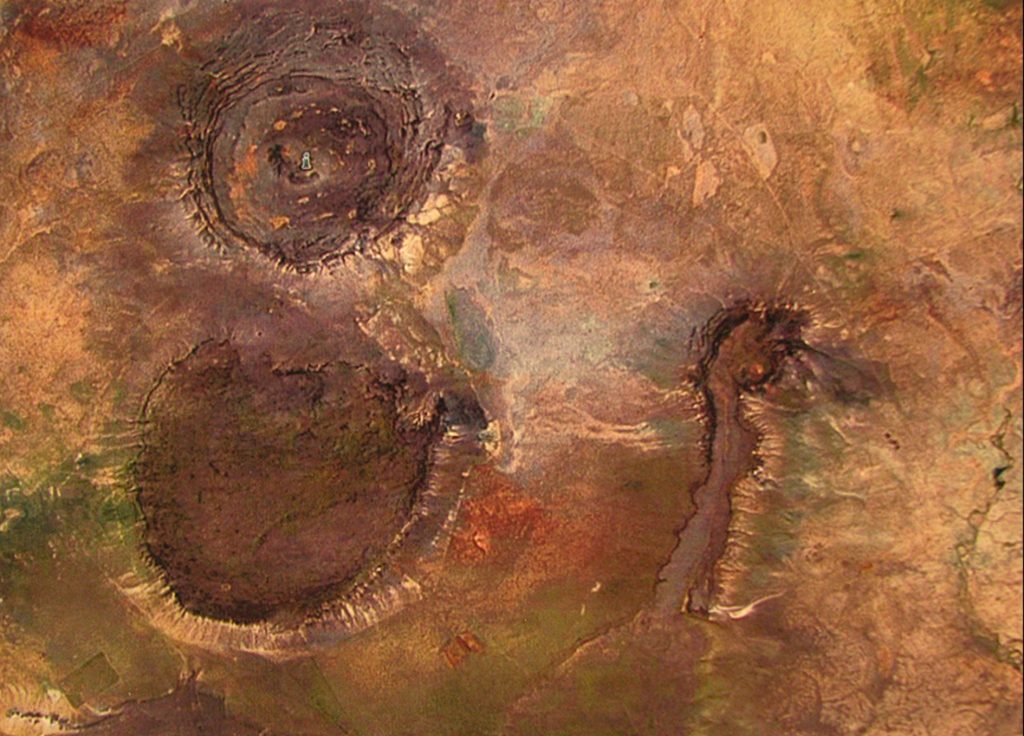
Figure1a. The twin craters in inner Mongolia, (44.24N, 114.24E) from Google Earth. The craters (diameters 4 and 5 km) have been dismissed as primarily volcanic in origin and indeed volcanism is evident in both structures as well as in the ridge 7 km to their south east. This part of China is noted for rifting volcanism, the crust being pulled apart with consequent local upwelling of magma to pockets lying just a few kilometers below the surface. The northern crater (called Chule Wule) has a form more typical of an impact. Bayesian common sense suggests that all three structures were triggered by the same event.
Map data: Google, Maxar Technologies
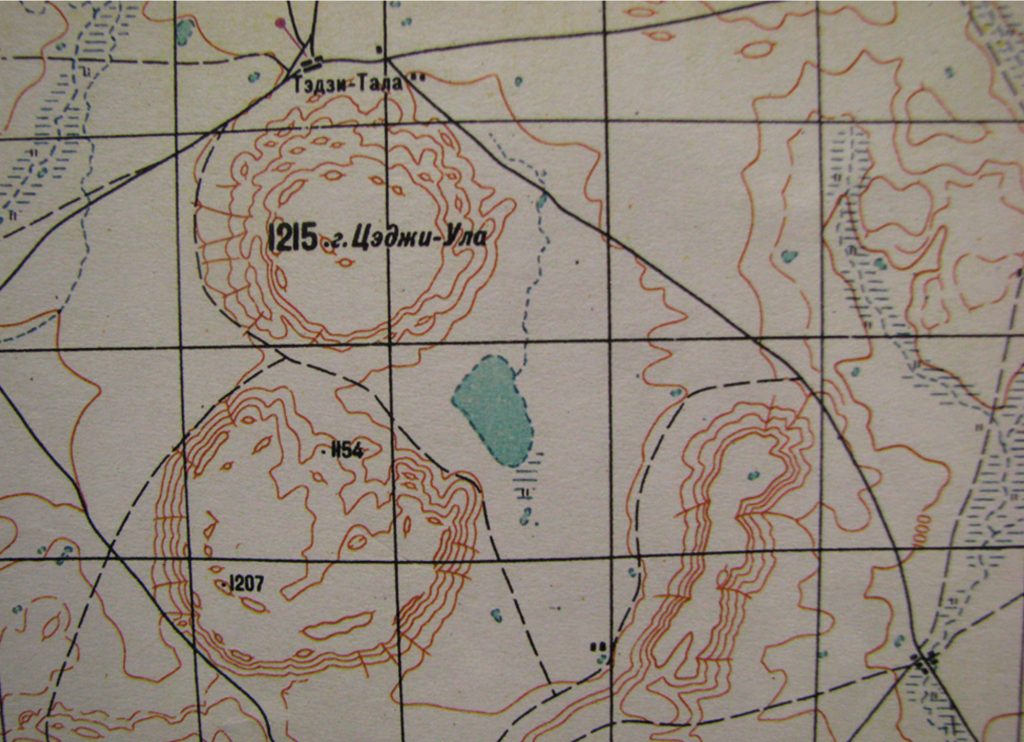
Figure 2a A Russian contour map given to me by Dr Michael Scheiber, then head of the Reis Crater Museum, Noerdlingen, Bavaria
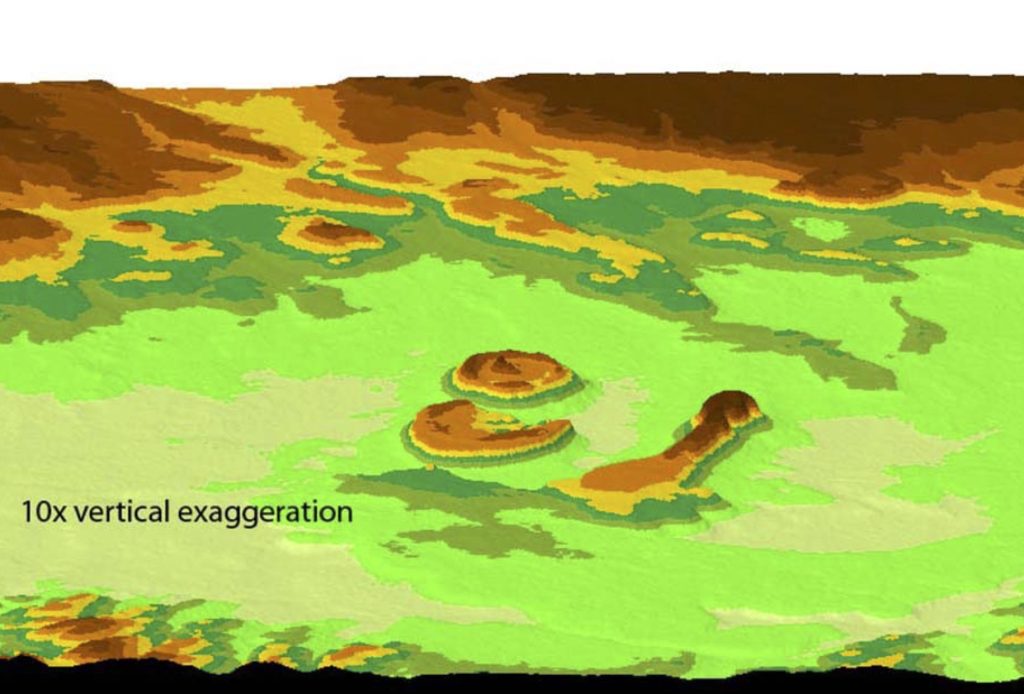
Figure 2b also from Dr Michael Schieber. 10-fold vertical exaggeration of the twin craters and adjacent volcanic ridge. Note the ‘bite’ out of the North-East corner of the Southern crater (local name Esige Wule), which points over Chule Wule and towards the arctic circle.
I visited these craters with Josef Muller and others in 2010 and 2011, and made two more trips to Northern China in 2014 & 2015. These last two visits were to try (but without success) to locate the (sites) where red-streaked Shui jing is still being excavated
Figure 3 is one of many videos on YouTube showing red-streaked glass being quarried and worked locally to make glass balls sold as executive toys (one of which I purchased in Xilinhot in 2011). The glass is first cut by a circular saw, then partially shaped by chipping, machined, ground, shaped, and polished.
It was only later that I began to follow Graham’s fascinating theories and evidence on the Younger Dryas cooling and the melting of the North American Ice Sheets and the consequent Great Flood that saw sea levels rise in a pulsatile way over several thousand years by 120 metres. In 2019, his book ‘America Before’ led me to the papers and books by Antonio Zamora (Figure 4) on the origin of the Carolina Bays, Nebraska Rainwater Basins, and the associated megafaunal extinctions in North America.
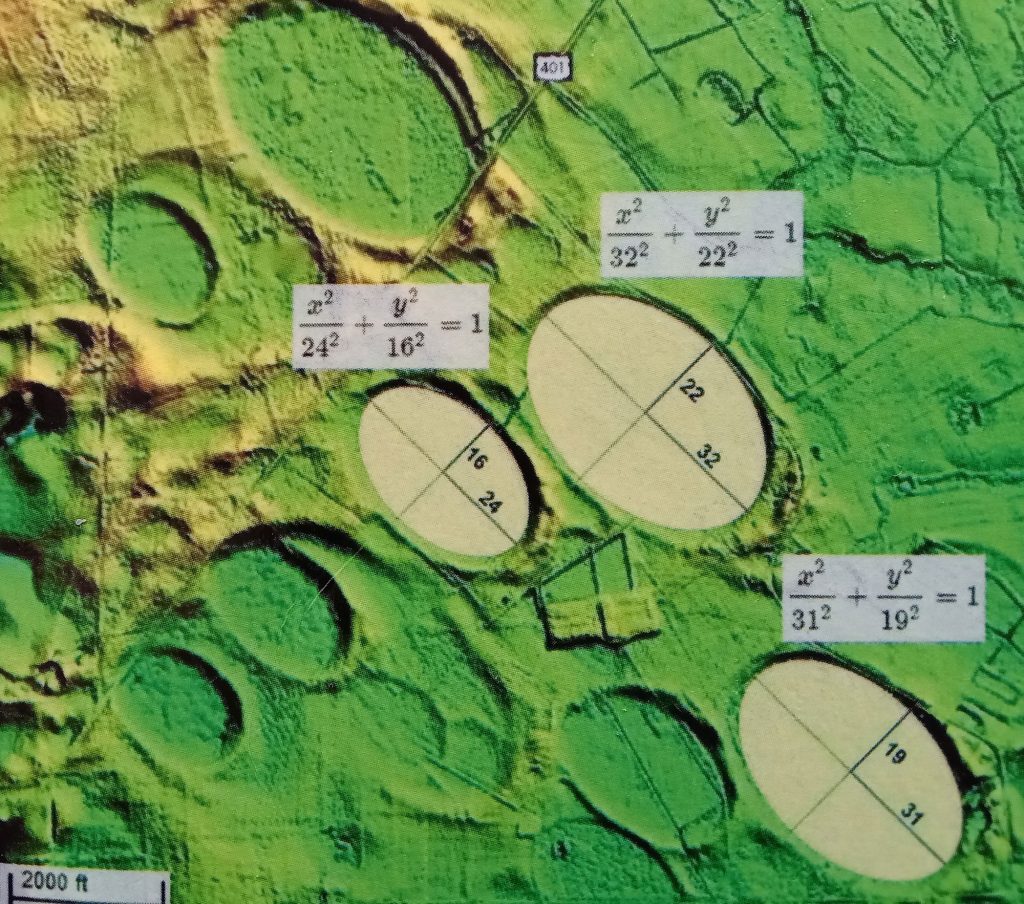
Figure 4a Lidar image of Carolina Bays, from the cover of Antonio Zamora’s authoritative book ‘Solving the Mystery of the Carolina Bays’ (ISBN No 9780983652397). Image courtesy of Antonio Zamora.
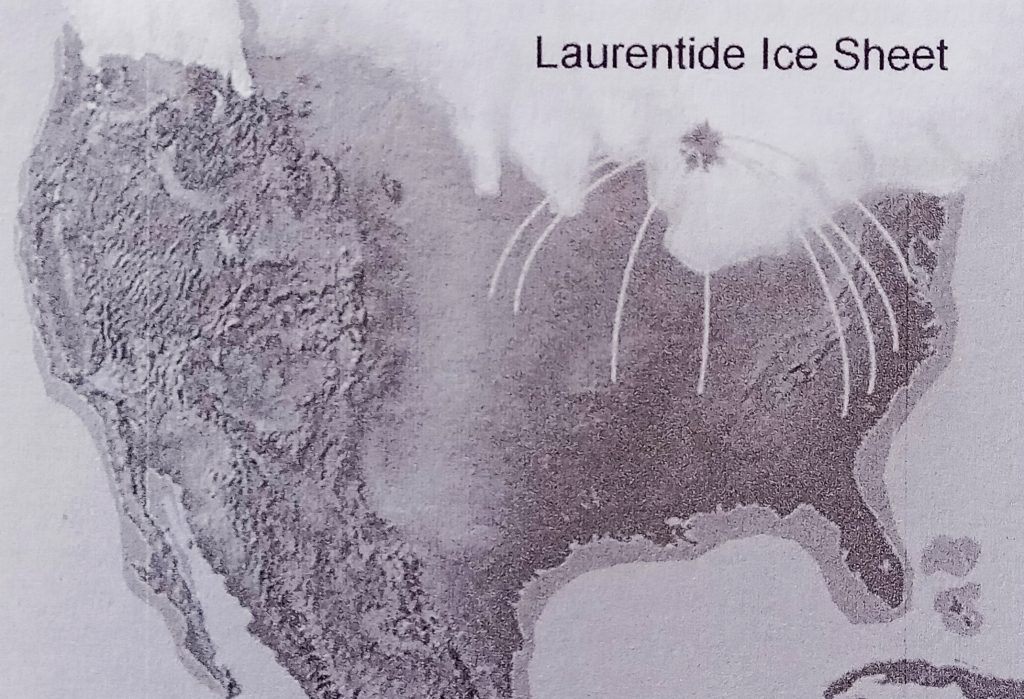
Figure 4b Zamora’s depiction of the origin of the Carolina Bays and Nebraska rainwater basins. which point to ejection of massive ice fragments from what is now Saginaw Bay.
I have also since read the seminal paper by Richard Firestone (Firestone et al., 2007, PNAS 104 (41): 16,016–16,021). Although heavily disputed by mainstream geologists, I find their evidence highly persuasive. What I want to do here is suggest how these events (‘my’ Twin Craters impact in Inner Mongolia, and unique shui jing glass, on the one hand, and the catastrophes in North America, on the other) might, in fact, be linked in a direct but not immediately obvious way. This is a hypothesis, but just because it comes from the mind of an aged retired physician is not, I submit, a reason for experts to dismiss it out of hand! Indeed, I take comfort from Albert Einstein, who once said, ‘If at first an idea is not absurd, then there is no hope for it!’ So here I go…..
Summary of my theory and associated evidence
1) I believe that Antonio Zamora is emphatically convincing in his principal hypothesis. That is that the Carolina Bays and Nebraska Rainwater Basins, for which existing alternative theories are highly faulted, were caused by ejection, 12,900 years ago, of vast quantities of ice chunks radially from the Laurentide Ice sheet in suborbital ballistic trajectories into and back from space. He argues strongly for a massive direct extraterrestrial impact, and postulates that this provided all the kinetic energy for the ice ejection, which is the main point where our hypotheses differ. My theory, on the other hand, postulates that the ice sheet was struck by a much smaller impactor. This penetrated the ice sheet and obviously released all its kinetic energy on striking solid ground, but was too small to lead directly to immediate local destruction of an ice sheet 2 to 3 km thick. This impactor might have come directly from space, traveling at 20 km/sec. However, applying Occam’s razor, I speculate that it was, in fact, linked to the primary impact of the much larger dumbell-shaped bolide (‘Dumbo’), on Inner Mongolia, which left its mark with the twin craters Chule Wule and Esige Wule (44.24N, 114.24 E, shown above. I argue that because of secondary volcanism, these have been mistakenly labelled as primarily volcanic in origin.
My hypothesis, linking this event with the Laurentide disaster, is that in addition to two large fragments, there was a third (waist) fragment of the bolide (’JoBo’), which was fractionally retarded on entry, landed on the Southern crater (Esige Wule) site as it was exploding, and was thereby deflected North-Eastwards in a 10 km/sec suborbital trajectory taking it to the same latitude over on the Laurentide Ice Sheet. I postulate that the consequent release of kinetic energy from JoBo striking firm ground beneath the ice sheet served as the ‘touch-paper’. This triggered, after an interval of some hours or longer, a unique and gigantic subglacial explosion of microbial-derived methane that had been stored as methane clathrate crystals below the ice sheet. (Figure 5).

Figure 5 Methane clathrate (aka fire ice) is a composite crystal of 87% water and 13% methane. It also can accommodate nitrous oxide, which is also a microbial product and combined hydrates are described (https://www.researchgate.net/publication/318769373)
Sources- Left: Public Domain, Right: CCBYSA3.0, Wusel007
I suggest that under critical conditions, methane combined explosively with bacterial-derived nitrous oxide (N2O) and/or interglacial dissolved oxygen, and with superheated pressurised steam caused a massive explosion that blew the top off a 3000 km2 area of 2-3 km thick ice sheet, now marked by Lake Huron’s Saginaw Bay.
Zamora’s evidence on the Carolina Bays and Nebraska Rainwater Basins
These are extraordinary structures, elliptical in shape and varying greatly in size, and their long axes all intersect at Saginaw Bay, latitude 43° 54′ N, longitude -83° 34′ W. (Figure 6). Saginaw bay itself, however, does not have features of a classical impact crater; so I postulate that it is the remnant crater from a small impact, followed by a massive subglacial methane explosion.
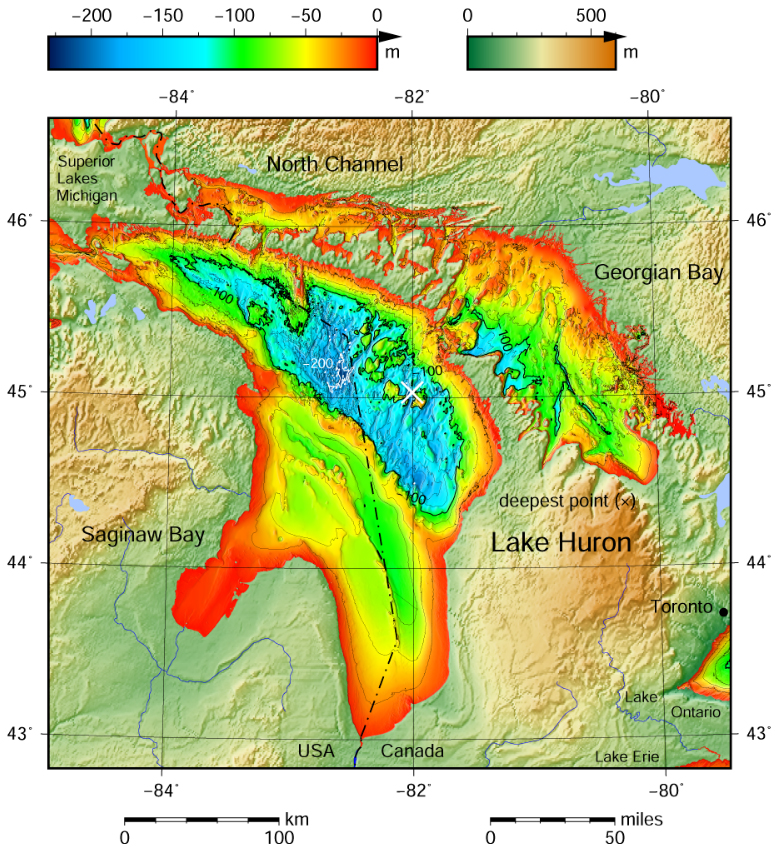
Figure 6. Note that Saginaw Bay is at nearly the same latitude (44N) as the Twin Craters in inner Mongolia, on the other side of the Northern hemisphere. This would fit with a ballistic trajectory over the ice cap of a deflected fragment of the original impactor ‘Dumbo’.
‘Great Lakes Bathymetry and GLOBE’, by Darekk2 (CCBYSA4.0)
Zamora’s postulated ice chunks, I suggest, were, in fact, ejected by a massive gas and steam explosion that literally blew the lid off the Laurentide ice sheet upwards and outwards into space, to fall back under gravity to land in a circle across large swathes of the Eastern United States (as well as back onto the remaining Ice sheet itself and into the adjacent sea). Such ice impacts would only have left tell-tale marks on unconsolidated ground (i.e. sedimentary soil with high water content that was liquified by massive post-explosion ground vibrations). Zamora presents strong evidence that the ice-impact sites underwent viscous relaxation to leave the elliptical basins with overturned margins that are evident today as the Carolina Bays and Nebraska Rainwater Basins. The long axes of these ellipses from both sources all intersect back at Saginaw Bay, suggesting this was their site of origin.
Antonio Zamora’s Energy calculations
Of course, falling ice chunks will mainly have landed on hard ground, where they killed especially large mammals, including Mammoths, Mastodons and Humans (the Clovis people). Zamora’s calculations, based on the size and distribution of the bays, led him to propose a primary impact on the ice sheet of 10^21 to 10^22 joules energy. He postulates that all this energy came directly from the impact, possibly of a comet of 2 to 3 km diameter. This would be a one in two to three million year impact event, as opposed to one every 100,000 years as postulated in ‘my’ model (Figure 7).
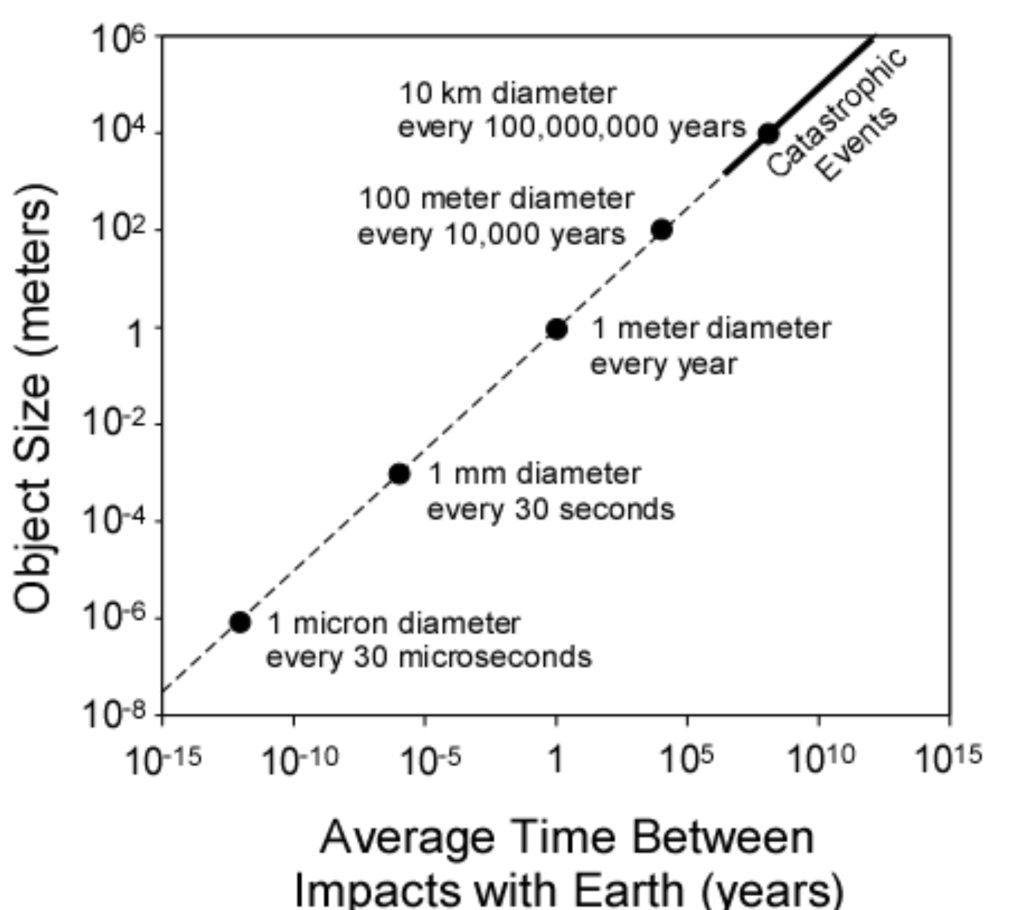
Figure 7. Log-Log plot of object size versus impact frequency. The ‘Twin Craters’ impact (600 X 250 metres) is a one in 100,000 year impact, well below the expected frequency of ‘normal’ catastrophic events. A weak supplementary argument, but one that takes into account the explosive potential of the accumulation of 2.6 million years of subglacial methane clathrate built up over the Pleistocene ice age!
Image: Prof. Stephen A. Nelson, Tulane University, used with permission.
The lack of an impact crater at Saginaw is obviously a major weakness in this part of Zamora’s hypothesis. Furthermore, it is energetically uneconomical since much of the energy from a direct impact would be deflected sideways. With a subglacial methane/steam explosion, it would all be deflected upwards from below 2 km of ice. And it ignores the known fact that even in Antarctica there are copious bacterially derived subglacial methane clathrate deposits.
2) The papers by Richard Firestone and his many colleagues from all over the world do provide strong testimony to a giant primary impact on hard ground at the onset of the Younger Dryas. Although heavily criticised on peer review (see VT Holliday et al, Earth Science Reviews, 247, (2023) 104592), Firestone provides strong evidence of a high-velocity meteorite impact somewhere that was already rich in pure carbon deposits, with the consequent copious formation of nanodiamonds, and other impact markers, approximately 12,900 years ago (dating from Greenland Ice cores). Inner Mongolia, the location of the twin craters, is covered by copious surface coal deposits (https://www.gem.wiki/Inner_Mongolia_and_coal), and so provides a ready source of impact diamonds.
3) This impact was followed by the deposition of a widespread black mat carbon layer from global burning across North America, and as far away as Holland and South America (See Figure 8). (https://link.springer.com/article/10.1007/s00531-022-02287-x)
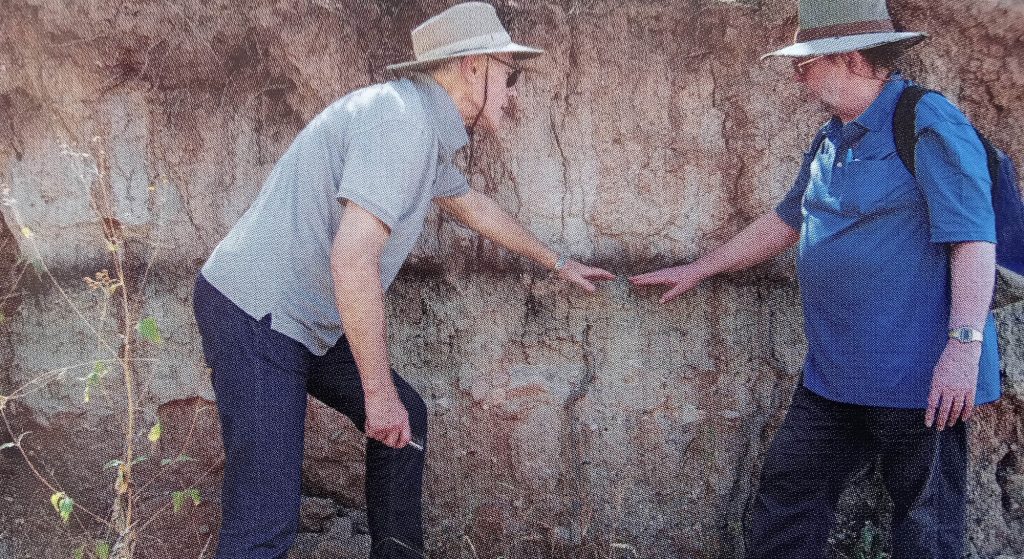
Figure 8 Graham Hancock and Antony West examining the ‘Black Mat’ carbon layer in an exposure at Murray Springs, Arizona (Image from ‘America Before’)
The impact markers there and elsewhere are concentrated immediately below such deposits of carbon (Firestone et al., 2007, PNAS 104 (41): 16,016–16,021)). These data, however, tell us nothing of the site or size of the primary impact, although the stratification does indicate that the extraterrestrial impact preceded the extensive burning. One would expect a large impact crater, while none is found at Saginaw. The twin craters in Inner Mongolia, which themselves have been dismissed as being primarily volcanic, are in an area rich in coal deposits. The extensive volcanism in and around the twin craters might well have been secondary, bearing in mind the widespread evidence in China of rifting volcanism, as the continent is being torn apart, leaving pools of liquid magma close to the surface. Furthermore, the long ‘Yolanda’ ridge, 7 km to the South-East of the craters, speaks to me of a local fracture from an angled impact coming from the North-west.
4). There is much to be learnt from studying pieces of Hongshan Shui jing glass. Although not formally dated, the twin craters appear geologically recent. As we have already seen, the glass is still being excavated, but on two trips in 2014 and 2015, we were unable to find the site. This may be because we looked in the wrong place. We know the rough location of the so-called Hongshan jade-carving culture was Liaoning and Inner Mongolia, and it is obvious that the deposits of glass would have been greatly revered, which is clearly no longer the case. I have direct evidence that impact diamonds (providing a ‘magic sand’ for carving) were used to carve the Shui Jing. (Figure 9)

Figure 9 A humble Hongshan shui jing zhulong (pig dragon) with hundreds of glistening microspheres in the drill hole (right). Images: David Anderson.
This, the first piece of Hongshan shui jing that I bought, had hundreds of glistening microspheres deep in a drill hole, and one such microsphere tested for me in The Department of Physics at Queen Mary University of London, gave a sharp diamond peak at 1332 nanometres wavelength on Raman spectroscopy (Figure 10).
Figure 10. Microcrystal removed from drill hole of the above Zhulong, and (right) Raman Spectroscopy confirms diamond (lonsdaleite) peak at 1332 nM. Images: David Anderson.
Furthermore two pieces of red shui jing in my Hongshan collection have what appear to be microdiamonds entrapped within the glass (figure 11).
Figure 11. Two Carvings with encased crystals, presumptive micro-diamonds. The biggest in the mask measures 0.5 mm, and the one in the fish, 3 mm, The mask shows in a cleft (inset images) many much smaller crystals, surrounded by what appears to be black carbon. Images: David Anderson.
Many other minerals are also encased in glass, giving it a range of distinctive colours. The commonest is red, which maps to aluminium, iron, potassium and sodium.
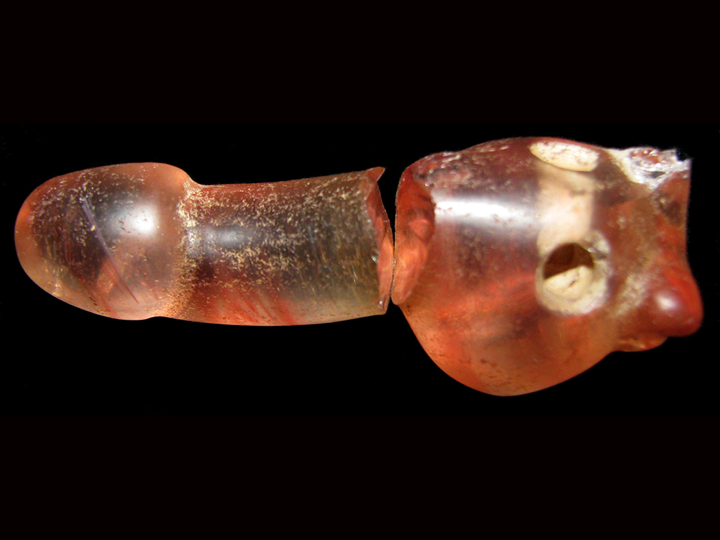
Figure 13. This accidentally broken classical shui jing phallic pendant provided the opportunity for electron probe microanalysis of the red streaks (Dr Gareth Hatton, Johnson Mathey Ltd). They were found to map to aluminium, iron, potassium and sodium on a background of pure silica, see https://www.youtube.com/watch?v=W2CYggCtfFM&t=185s @ 3.06 minutes). No additives or modifiers, and melting temperature >1600C.
Less common are opalescent streaks (which map to titanium (Figure 14), and others of cobalt blue, which indeed map to cobalt (Stuart Kearns, Bristol, data not shown).
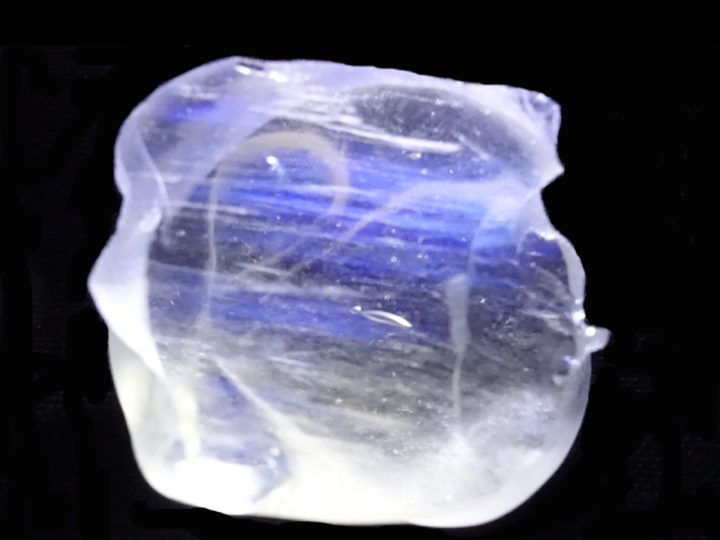
Figure 14. Part of a broken Hongshan pendant carved in iridescent shui jing. Mineral analysis by Dr Gareth Hatton revealed that the iridescence mapped to discrete oblong pockets of almost pure titanium (presumably as titanium oxide) with a trace of iron. No iridium was detected.The background was pure silica. (See https://www.youtube.com/watch?v=W2CYggCtfFM&t=292s @ 4.52 minutes)
Carbon dating. Glass itself cannot be carbon dated, but I was very fortunate to find a classical Hongshan skull pendant with woven cloth tucked into the skull cavity, which Vilnius Radiocarbon dated the piece to 10,140 years before the present (Figure 15).
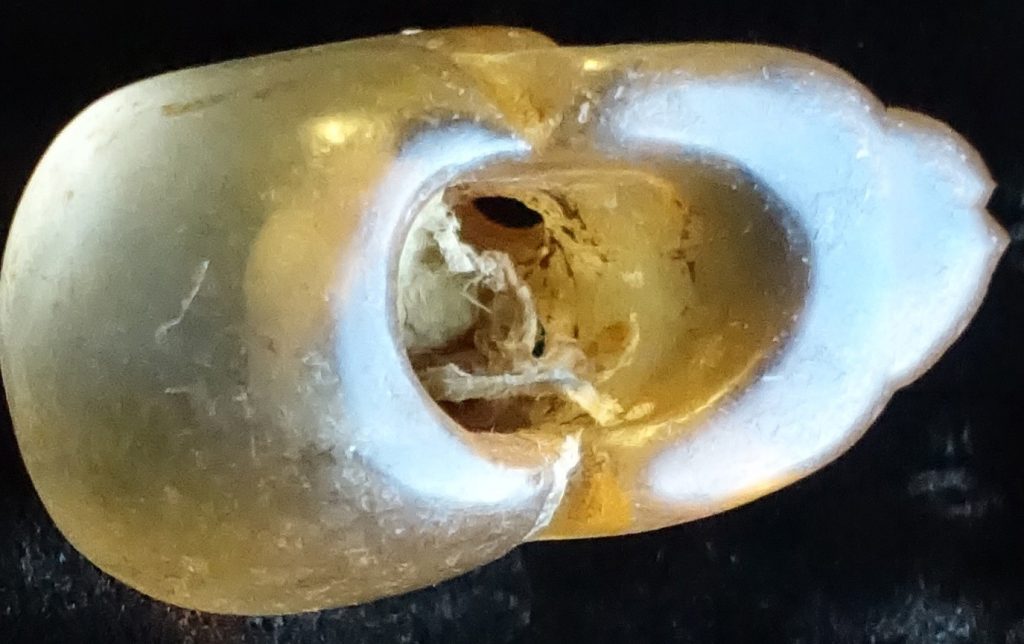
Figure 15 I bought this small skull pendant, in Shi Li He market, Beijing, in 2016 , and found remnants of the suspension cord, folded into the cavity. I sent two parts to Vilnius Radiocarbon for micro-carbon dating. The older date (10,143+/-50 years before present) belongs to the woven piece (Cloth A) which appears to be less contaminated than Cloth B) (dated 8720 years before present).This is probably the only relevant carbon dating to have been done on any Hongshan shui jing carving
My hypothesis, which links two events at latitudes of 44N
Figure 16 (© DCA) Images run from left to right and top to bottom. Postulated sequence following impact of a dumbell-shaped bolide (600 metres long) in Inner Mongolia.
Fifth image shows deflected waist piece with gaseous silica aspirated through exploding northern crater, picking up impact diamonds, magma and minerals. Sixth image marks trans-arctic ballistic flight path of ‘Jobo’, and yellow line predicted site of glass quarries.
The hypothesis is, therefore, that the Primary Impact at the onset of the Younger Dryas is the twin craters impact in Inner Mongolia. This double impact was caused by a 600-metre long dumbell-shaped bolide, which I suggest broke on striking the atmosphere into two similar-sized bolides (200 – 250 metres diameter) and a smaller waist fragment. Alternatively, there was a smaller sister meteorite of 50 to 100 metres in diameter that travelled in the wake of its 250 metre ‘big sister’. We can estimate the diameters of the larger ones from a ratio of approximately 20:1 for crater to bolide diameter (https://en.wikipedia.org/wiki/Impact_event). The postulated retarded third fragment is suggested by the ‘missing’ hemicrater, of roughly 1.5 km diameter, in the NNE corner of the otherwise circular southern crater. (See Figure 2b, also shown again below). This latter is consistent with the waist piece being deflected in a North/North-easterly direction, taking it half a second later over the East margin of the now fully exploding North crater. I postulate that it travelled at around 10 km/second, well below the escape velocity, taking it on a ballistic suborbital trajectory to come down to earth on the 2 to 3 km deep Laurentide ice sheet. It penetrated the ice, releasing all its kinetic energy on hitting solid ground below. The force of the resultant impact explosion would have to be deflected mainly radially sideways because of the pressure of the overlying ice, as illustrated in Figure 17.

Repeat of 10X exaggerated image shown in Figure 2b, which surely is consistent with the deflected ballistic flight path. The volcanic ridge 6-7 km away appears to be part of the same event.

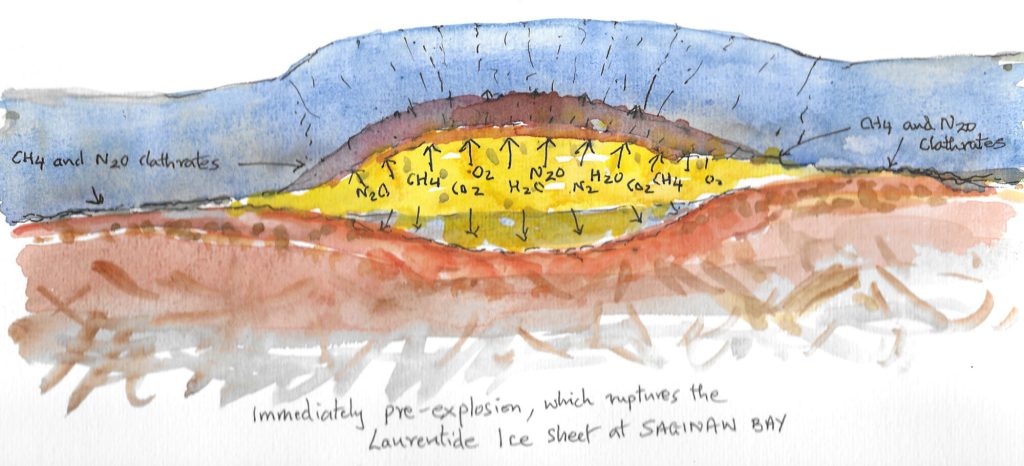 Figure 17. (© DCA) (a) Arrival of the deflected ‘JoBo’ fragment on Laurentide Ice Sheet. First, it zips through and hits solid ground at Saginaw, where it explodes and all its kinetic energy is dissipated as heat. Most of the explosive energy is dissipated sideways, (17b) and water and methane (and N20) are released from clathrates built up over hundreds of thousands of years by bacterial degradation of rotting wood and other organic material. Lower surface of the ice sheet starts to melt, pressure builds, forcing a thinning dome upwards (Figure 17 (c).
Figure 17. (© DCA) (a) Arrival of the deflected ‘JoBo’ fragment on Laurentide Ice Sheet. First, it zips through and hits solid ground at Saginaw, where it explodes and all its kinetic energy is dissipated as heat. Most of the explosive energy is dissipated sideways, (17b) and water and methane (and N20) are released from clathrates built up over hundreds of thousands of years by bacterial degradation of rotting wood and other organic material. Lower surface of the ice sheet starts to melt, pressure builds, forcing a thinning dome upwards (Figure 17 (c).
The underside of the ice sheet would start to melt, releasing steam and gases dissolved in the ice, including methane produced over hundreds of thousands of years by the action of methanogenic bacteria on buried trees and soil.

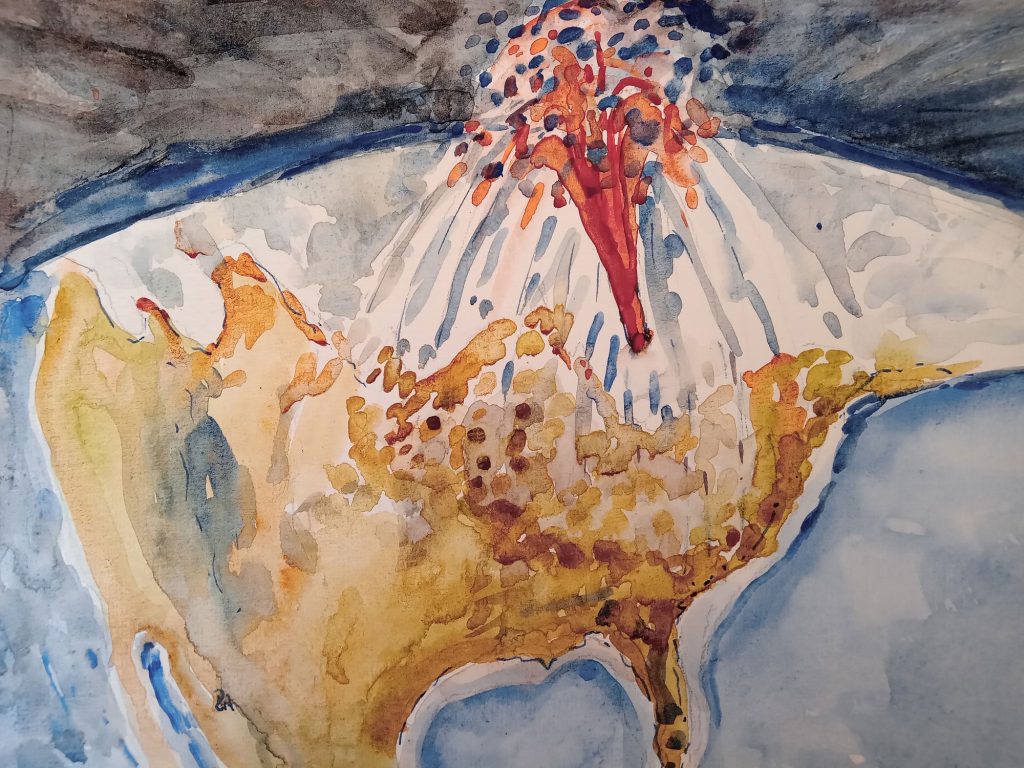 Figure 18. (© DCA) (a) Upward bulging of an ice-sheet dome, just before methane /steam explosion (b) Postulated gigantic methane explosion in which all combustion products and steam are ejected upwards and outwards from Saginaw.
Figure 18. (© DCA) (a) Upward bulging of an ice-sheet dome, just before methane /steam explosion (b) Postulated gigantic methane explosion in which all combustion products and steam are ejected upwards and outwards from Saginaw.
Postulated subglacial Saginaw methane explosion
For an explosion to take place, we need to postulate a large accumulation of subglacial methane and an equivalent amount of oxidant in the form of oxygen-containing gas released from the ice sheet as the under-surface melts. At a critical point, and under high pressure from the weight of the (albeit thinning) ice and expanding gases (H20, CH4, plus N20 and O2), I postulate that an ice dome was forced progressively upwards (Figure 18a ) until a critical condition of temperature, pressures and gaseous composition was reached when there was a massive subglacial 40+ km diameter methane explosion. I have had to tap into my artistic brain to illustrate the postulated Critical Moment! (Figure 18b). As a hypothesis, it may have a certain economical attraction since it postulates an upward ejection rather than a downward impact, all of the energy of the explosion being forced upwards, where there is little resistance from the atmosphere, and none would be wasted sideways as in the Zamora model.
Are there any possible small-scale natural models?
There are, of course, no precedents for such an event on this scale, but are there any similar explosive events that might be attributed to methane explosions? To my surprise, the answer is ‘yes’, and it comes in the form of recent strange unexplained circular explosions in the Siberian tundra (Figure 20).
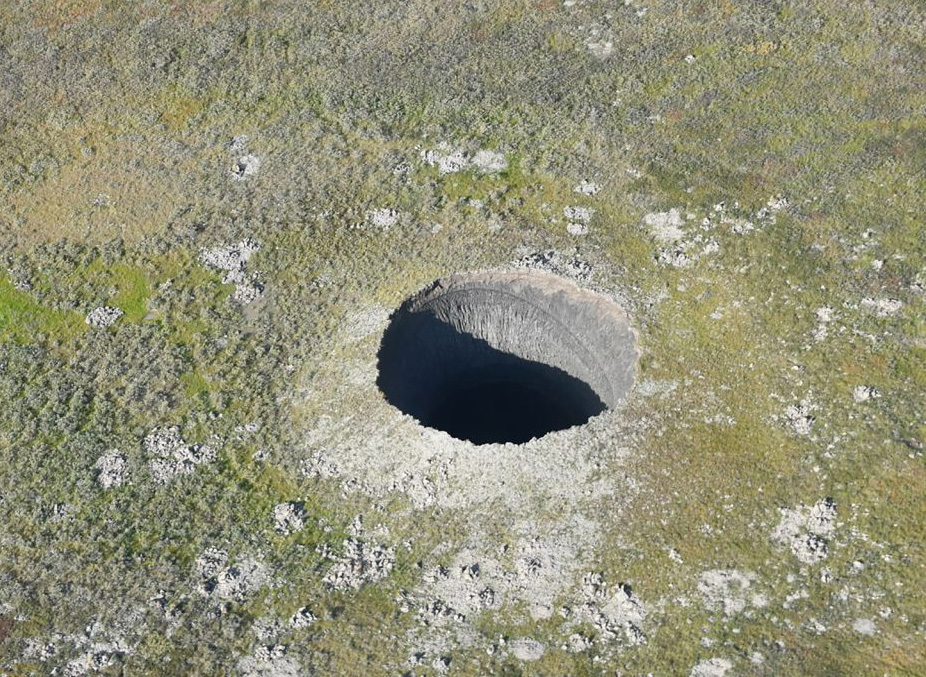
Figure 20 One of the mysterious Siberian Tundra Methane Explosion Holes. Note ejecta around perimeter of the hole. Photo by Evgeny Chuvilin, used with permission.
See also https://www.bbc.com/future/article/20201130-climate-change-the-mystery-of-siberias-explosive-craters.
Especially relevant is a direct quote from Nikolay Shevchenko in Science & Tech, October 2020. “Scientists who studied satellite images have discovered that before a crater is formed, a fast-growing hill appears [on the surface]. The hill grows up until some critical indicators are surpassed, and then it explodes”.
So, scaling it up many thousand-fold, we can surely predict that if there was a pre-explosion event in the ice-laden tundra, there could have been one in the Laurentide ice sheet at Saginaw Bay. Antonio Zamora’s arguments, based on the orientation of the Carolina Bays and Nebraska basins, are highly convincing Bayes-wise, as far as they go. The alignment of these structures all point back to a single site of origin, namely Saginaw Bay. But if we consider my postulate that most of the energy for this event came from terrestrial energy from a massive subglacial methane explosion, how much Methane Clathrate would be necessary in order to satisfy Zamora’s impeccable kinetics?
A methane explosion; some relevant ‘back of the envelope’ calculations
Since there is some evidence of unusual metals such as platinum (Firestone et al. 2007), to help our case, I suggest the trigger was a fragment of an unusual metallic meteorite, density 8, of diameter 100 metres and landing at 10 km/second. This would release on impact at Saginaw, 2X10^17 joules of kinetic energy, on coming to an abrupt halt on impact under the ice sheet. This might be adequate as a touch paper, but is relatively insignificant compared to the kinetic energy calculated by Zamora from chunks of ice, 180 metres diameter (the size of the Yankee Stadium) needed to produce a single Carolina bay of average diameter 1km (1.27X 10^16 Joules). In his book, Zamora multiplies this figure by 500,000 (the total number of bays, to arrive at an estimated figure of 6.35 X 10^21 joules. But is this multiplication factor justified, since the average diameter of a bay shown on lidar images is nearer to 100 metres than 1 km? (Figure 21). it is essentially all guesswork, but it may be reasonable to demand 6.35 X 10^20 joules, an order of magnitude less, if all the force is directed upwards. So let us return to my calculations….
- a) Surface area of Saginaw Bay = 3,000 square kilometres
- b) Energy stored within 1 litre methane clathrate = 6×10^6 joules
- c) Therefore 1 cubic km methane clathrate = 6×10^18 joules
- d) Supposing an Ice Depth 3 Km, for an area of 3,000 square km, this comes to 9,000 cubic kilometres of ice
- e) If 0.1% of this ice is methane clathrate (‘fire ice’, mostly as a band at the base of the ice sheet) this yields 5.4 x10^19 joules of energy.
So we are now surely at least in the same ballpark? Uncertainties from my model include the following:
- size & density and so KE of impact of ‘JoBo’ (the 100 metre deflected fragment), released on impact under the ice sheet;
- the volume of methane trapped under ice sheet, and available for explosive combustion;
- the thickness of the Laurentide ice sheet at Saginaw Bay;
- the location of the margins of ice sheet uplifted by increasing pressure pre-explosion;
- the efficiency and direction of the methane/steam explosion;
- and the amount of extra gaseous methane and nitrous oxide released from cavities below the ice sheet.
The uncertainties from Zamora’s model appear to be just as great.
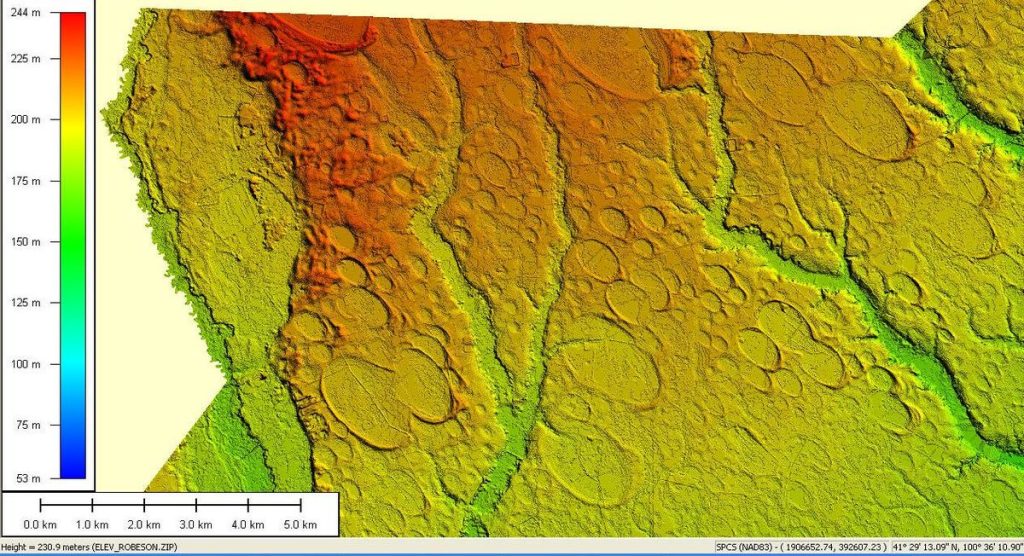
Figure 21 Lidar image of the Carolina bays, to show the variation in size. only the largest have an average diameter of 1 km.
(Public Domain)
Examining this lidar image posted on Wikipedia from an area of 132 Km^2, I counted 207 Bays, ranging from an average radius of 900 metres, down to 100 metres or less, giving a total area of around 29.6 Km^2. if all these bays instead, in fact, averaged 1Km in diameter, they would occupy an area 12.9 times the actual land area of 132 Km^2, which is obviously wrong. Of 1200 km ejecta in all directions from Saginaw Bay, of course, there must be a counter-balancing error in the opposite direction if we assume the evidence left by the bays and basins was representative of the ejection impact circle, extending all the way out radially from Saginaw Bay for 1200 km in all directions. In fact, we have no idea what the ejection angle of such a subglacial explosion might have been.
How was sunlight blocked out?
What, then, about the layer of ice crystals in space enveloping Earth, causing a blocking out of sunlight and the consequent 6 C temperature drop? Well, in the present model, there would be less ice than that produced by Zamora’s direct impact (Figure 19). But of course, to contribute to the cooling, there would also have been the ejecta from the primary impact in Inner Mongolia, plus secondary prolonged subsequent rifting volcanism in Inner Mongolia, plus the post-Saginaw wildfires, which we have yet to consider, all concentrated across the northern hemisphere, where most of the world’s landmass lies.
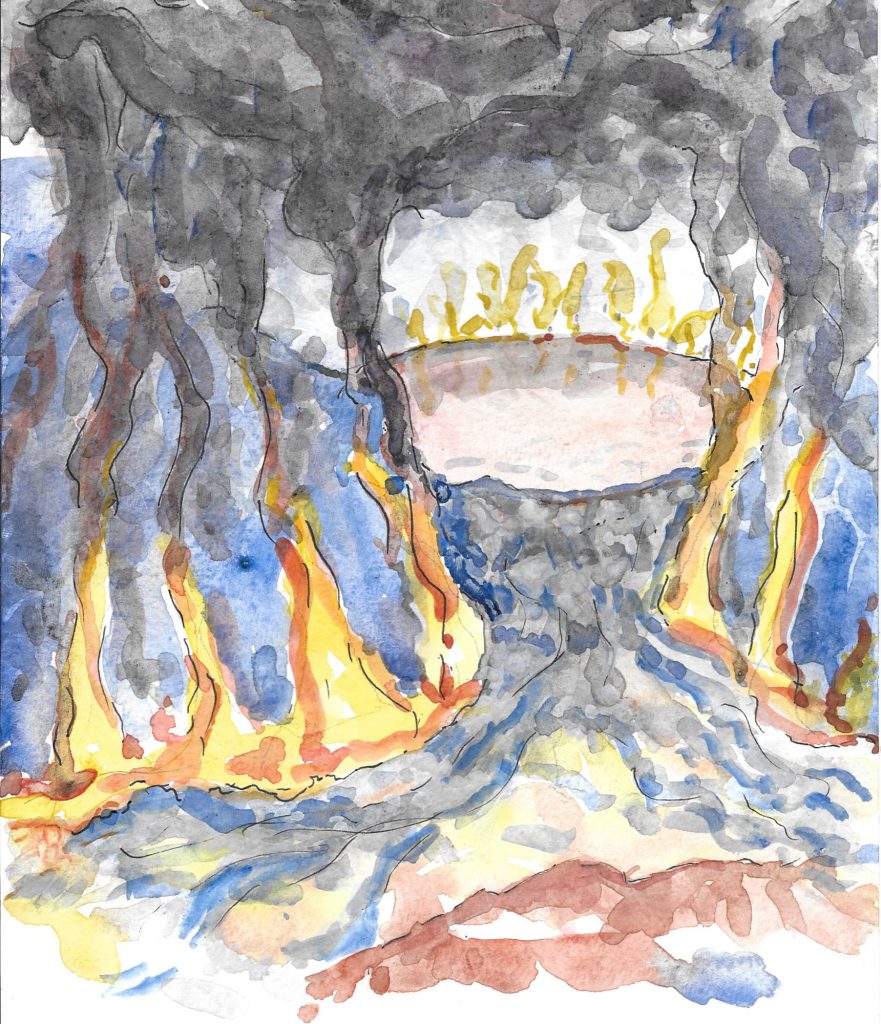
Figure 22 (© DCA) Hypothetical Image of post-explosion methane & wood/peat fires, origin of the ‘black mat’, under and around the ice sheet following the Saginaw explosion.
A consideration of the Laurentide Ice Sheet after the above explosion
So what happened next? Well, if the above reconstruction were to be true, we might confidently conclude that the water in Saginaw Bay itself was boiling hot, and that all round its periphery at the subglacial clathrate junction, methane fires were burning, and melting the ice sheet, and drying out and burning the wet surface of organic material from which thermogenic bacteria had been generating methane and nitrous oxide for over 2 million years. In an instant, all that was in the past, as a massive portal was opened for hot methane, wood and peat to burn and melt overlying ice all at the same time. This whole process would surely have set off massive fires and flooding and the first phase of the melting of the Laurentide ice sheet. The burning would have generated a black cloud, enveloping ultimately the whole North American subcontinent and more. Life for any humans and other mammals surviving such an onslaught would have been impossible. This smoke then settled as a tell-tale black layer all across the United States and across the Northern Hemisphere Eastward, and also into the Southern Hemisphere. And, of course, it lies immediately above the layer of impact micro-diamonds discussed already, and which this model says came from the primary impact in Inner Mongolia marked by lonsdaleite diamonds from the twin craters site.
These fires will have extended across the USA throughout the overcast, hot succeeding season, until they were finally extinguished by rains, floods and the onset of a 1,200-year long post-impact-explosion winter, called the Younger Dryas Period. (Incidentally, we have no idea about, when in the seasonal cycle these events occurred).
The effect of this catastrophe on civilizations across the globe
Whatever the explanation was for Saginaw Bay 12,900 years ago, in what is now the United States of America, humanity suffered its worst disaster ever when the whole population of Clovis people was wiped out in an instant by a gigantic global 3 km/sec pseudo-hail storm. This fate was shared with the woolly mammoths, sabre-tooth tigers, mastodons and all other large mammals there. Only small mammals had any chance to hide. The succeeding fire then blazed all over the USA, and sunlight was blocked out by smoke. As the dust and smoke settled and the fires went out, the ice crystals will have stayed in the upper stratosphere for the next 1,200 years, producing a return to global cooling, and a further build-up of the ice sheets. Ice core data (Figure 22b) tells us that this was then followed by a precipitous return to global warming, a dramatic and sustained melting of the North American ice sheet, and sudden catastrophic drainage of an enormous ice lake, Missoula, rushing waterfalls at Great Falls, Montana, a global rise in the sea of 120 metres, ultimately to levels seen today, and the Great Flood.
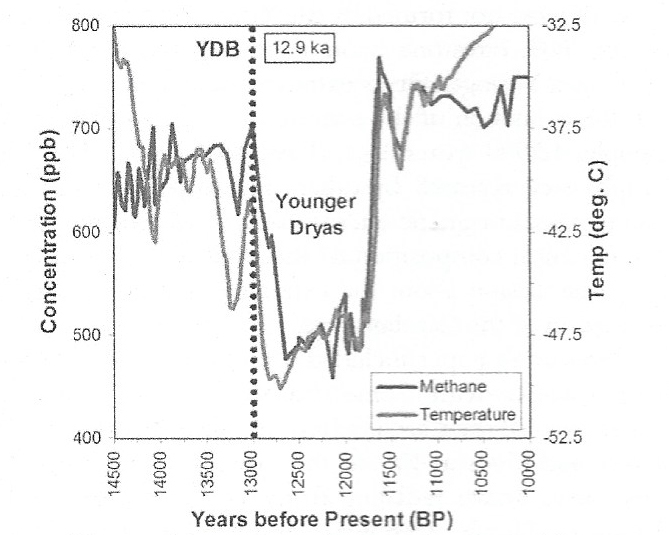
Figure 22b Temperature and methane levels from Greenland Ice Cores around the time of the Younger Dryas cooling.
(With permission of Anotonio Zamora)
We can only guess what the response of our sun-worshipping ancestors would have been. We presume that the Hongshan jade and agate carvers in Northern China, once the ejected silica glass had cooled, turned their carving attentions toward the glass seen perhaps as the ejaculate of the Great Dragon. And they would have been helped in this by the copious deposits of ‘magic sand’ microdiamonds of which I have presented evidence.
Why, when and how were gigantic neolithic dry stone structures made and moved?
As detailed at length in his excellent books, starting with ‘Fingerprints of the Gods’, Graham Hancock presents evidence of a human race of religious astronomy-obsessed true scientists. At some stage before or during the 120-metre sea level rise, such seafaring self-styled ‘Gods’ somehow mastered the art of creating enduring structures from gigantic stones that were much too large to have been lifted by human force alone; in many cases, individual stones weighing hundreds of tons were seemingly by magic lifted into place. An example is the South American fortress/temple of Saksayhuaman, near Cusco in Peru, located at an altitude of 3,700 metres above sea level. We don’t know how our forebears made this, or the Egyptian Pyramids. or the temple of Gobekli Tepe in Turkey, but as scientists, we surely must presume that it was not by magic! Even the much smaller megalithic walls of Amelia and Alatri in central Italy fill me with awe (Figure 23).
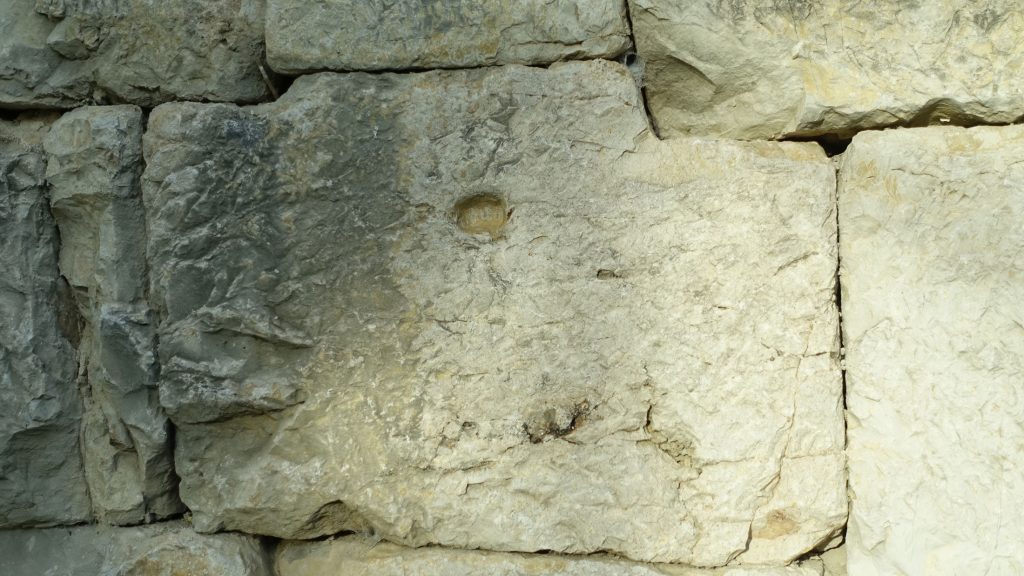
Figure 23. Part of the megalithic walls of the town of Amelia, Umbria. This 10 ton stone is one of many there that include a drilled recess that (paired with a complemntary one opposite) might have been used in the balloon-lifting process. Once developed the process could easily be scaled up to lift ever more massive structures.
Photo: David Anderson
If we leave aside the question of how the stones were skillfully carved and their shape perfected, the abiding problem is how the stones were moved into place.
For Saksayhuaman, it seems they were quarried 35 kilometres away. (https://en.wikipedia.org/wiki/Sacsayhuam%C3%A1n).
And, for Stonehenge, maybe 15 miles away!
(https://www.popularmechanics.com/science/a33480591/stonehenge-mystery-solved-stones-origin/).
Similar lifting holes are visible in many of the heaviest stones in Saksayhuaman, and image DD27 image on above Wikipedia page also shows multiple surface carving marks.
The most obvious answer must surely be that they were rendered effectively weightless, and then horizontally hauled into place. And the only way to achieve this would be to attach them to massive gas-filled balloons that were lighter than air. This means they were filled with either hydrogen or methane gas. Air has an average molecular weight (MW) of 29 (28 for N2 and 32 for O2 and 18 for water vapour). H2 has a MW of 2, and CH4 lies halfway between hydrogen and air, at 16. Fascinating insight into the natural origin of such balloons comes from my cousin Hugh Hunt’s research into the Zeppelins, which were the scourge of London during the First World War, and whose hydrogen-filled balloons were made from cow appendix/caecum, the blind part of the large intestine!
Back to the above 12,900 years ago hypothesis and how might it be tested?
It seems obvious that geo-archeological studies need to be carried out at two major sites. First, in Inner Mongolia at the twin craters themselves, and at the residual Shui Jing glass deposits. The latter should mark the trajectory taken by the deflected 100-metre meteorite fragment of ‘Dumbo’ I have designated ‘JoBo’, and should also mark the direction of deflection of the aspirating ‘JoBo’ that then caused really big trouble under the ice sheet at Saginaw Bay.
Unfortunately, it has proven very difficult, despite films being freely available of the process of carving red-streaked glass balls, for me to identify at a distance the location of origin of the active shui jing quarries. Such would help confirm or refute my hypothesis. Second, detailed studies at and around Saginaw Bay itself should surely show whether it has traces of both a meteorite impact and a massive methane explosion. And third, surely more studies are needed on the ‘black mat ‘layer, and the impact diamonds and other impact structures; and on the legacy left by the Hongshan Culture and its carvings, with further studies on the jade and on shui jing glass itself. Furthermore, many pieces in my collection, and doubtless in others, contain pictograms carved in relief, which are not obviously legible by readers of modern Chinese, but may be the earliest written human script.
Returning to the present and what our past portends for our future
This may sound pretentious, but I believe that if mankind is to have any future, as opposed to becoming extinct as our Neanderthal relatives did, we need to stop funding pointless warfare and use our brains to properly understand and learn from our past. This must surely include the lessons of both history and pre-history. Without such understanding, how can we realistically predict, let alone control where we might be going? Of course, along with this comes the need as a species to understand ourselves better. It seems obvious that without the capacity to care for the distress of another being, and see them as part of ourselves, we are only partial humans. Have we really allowed our Society to evolve so that a complete person per se has no intrinsic value, as suggested by the likes of Yuval Noah Harari (https://www.ynharari.com/)? Can we really allow Artificial Intelligence to become so important that it can define a group of our fellow beings as totally worthless, and therefore dispensible?
We surely have to accept that we are all still part of biology, and always will be. We have to care for the weaknesses of others, learn from them, and by learning, help to strengthen them and ourselves. And we have to stop being fooled by the Global Psychopaths nurtured by and abusing the distortions from illicitly-obtained Big Money, who are using their power to exploit naïve concepts of carbon dioxide-induced climate change, pandemics and nuclear ‘vaccines’ to frighten the rest of us into voluntary extinction.
We live in a unique moment in space-time, and those of us who care must surely treasure it, and work to preserve it for future generations. I believe the real conflict we face is between empaths who care about the future of life on earth, and psychopaths who care only for their own present, and seem prepared to stop at nothing to get their way. Right at the centre is surely the need to wrest from the hands of criminals in charge, the power to destroy our biology and our Natural Immunity, with killer-vaccines, vaccine passports, implants, early death and Artificial pseudo-Intelligence (API). And surely this means we also need to work hard to understand better where we came from, and our shared past with other creatures on this uniquely beautiful but obviously dangerous Planet Earth! Dangerous as it is, we surely have no other place to go.








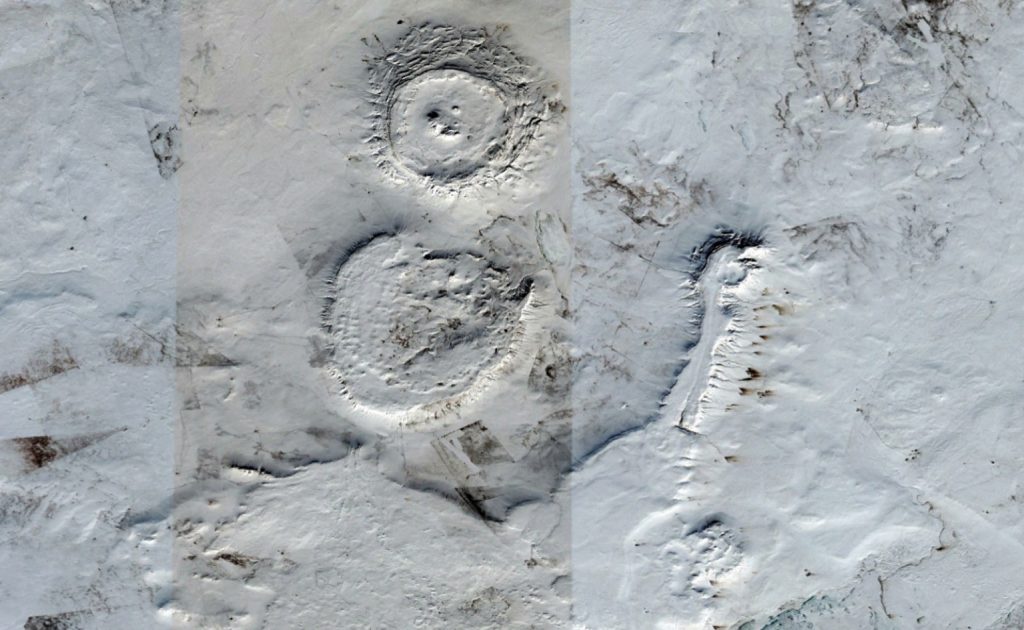

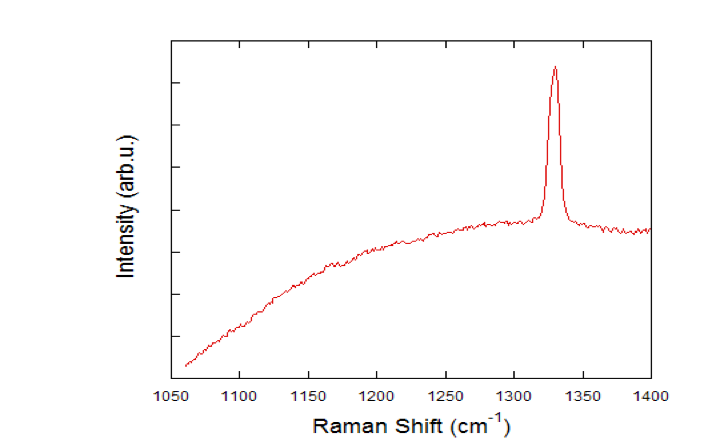
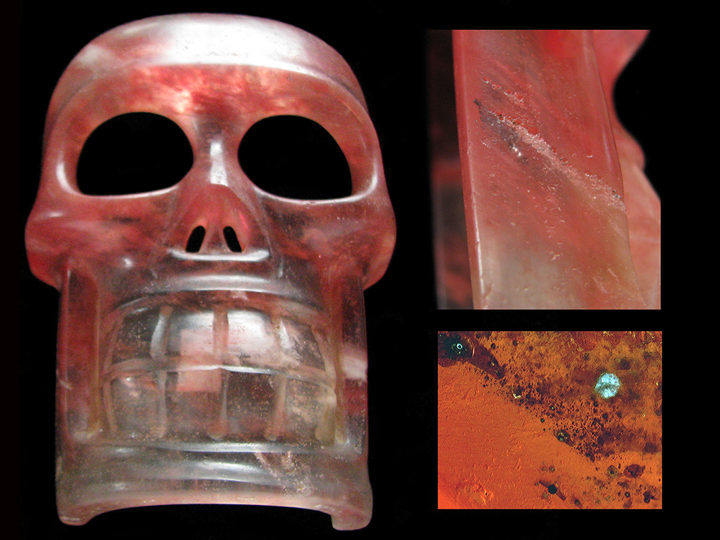
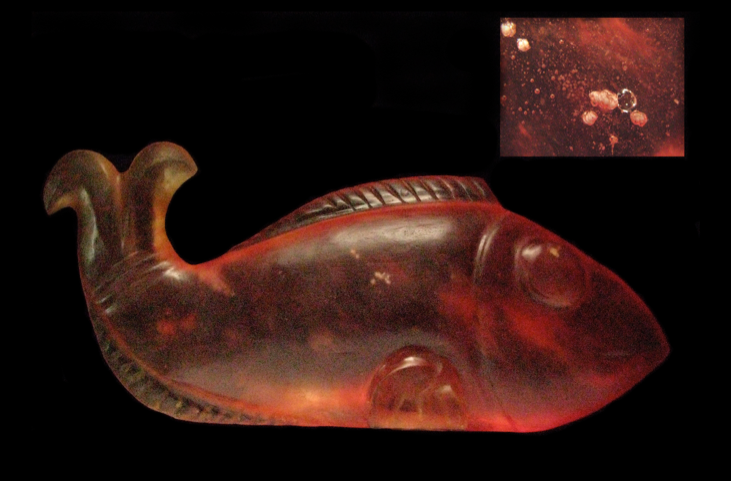
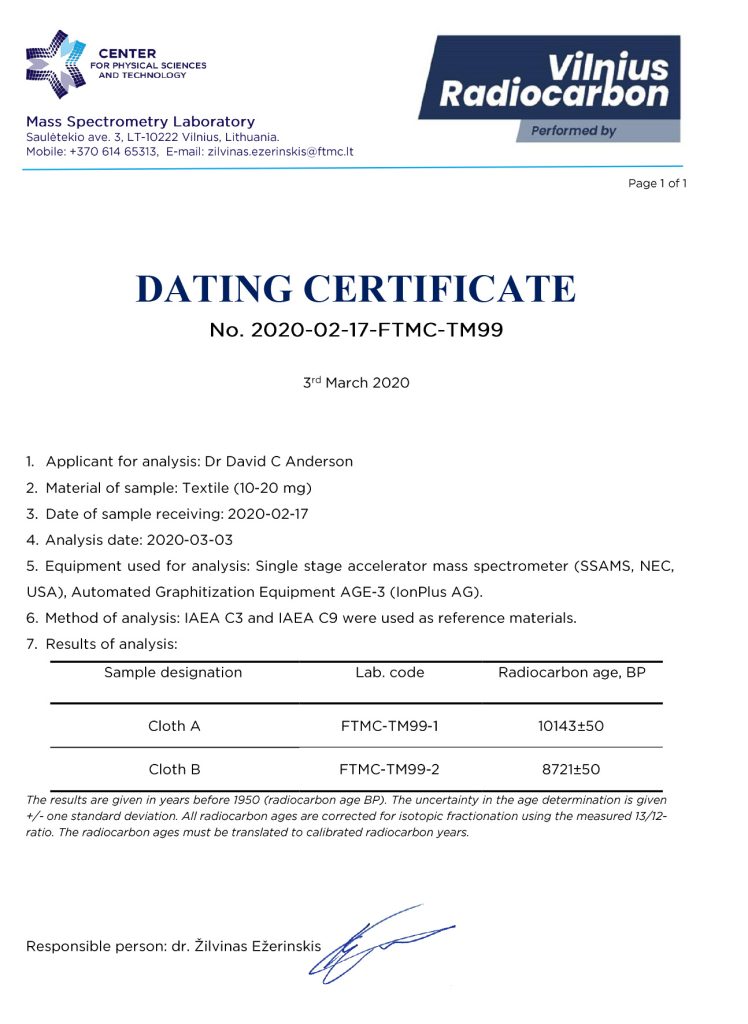
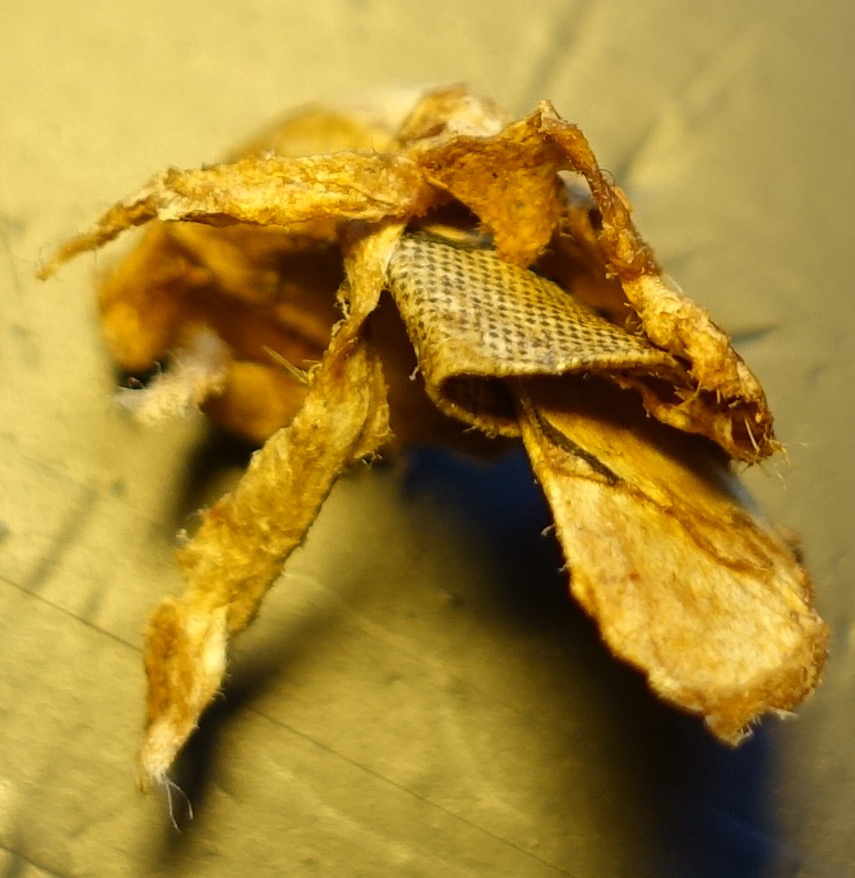
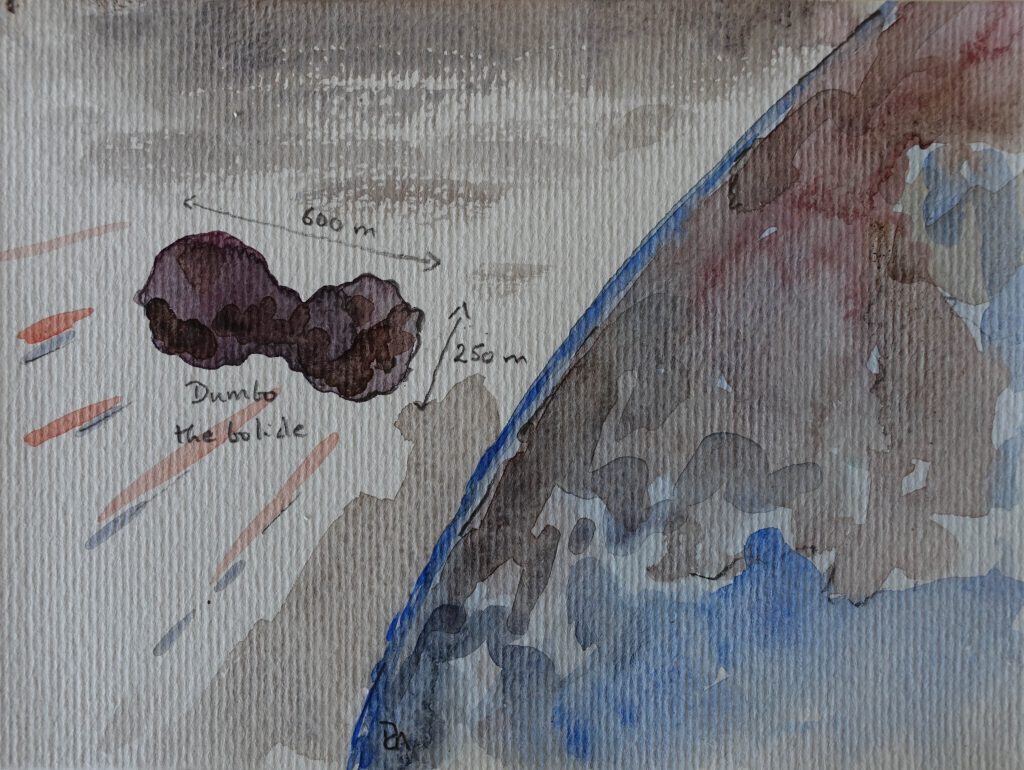
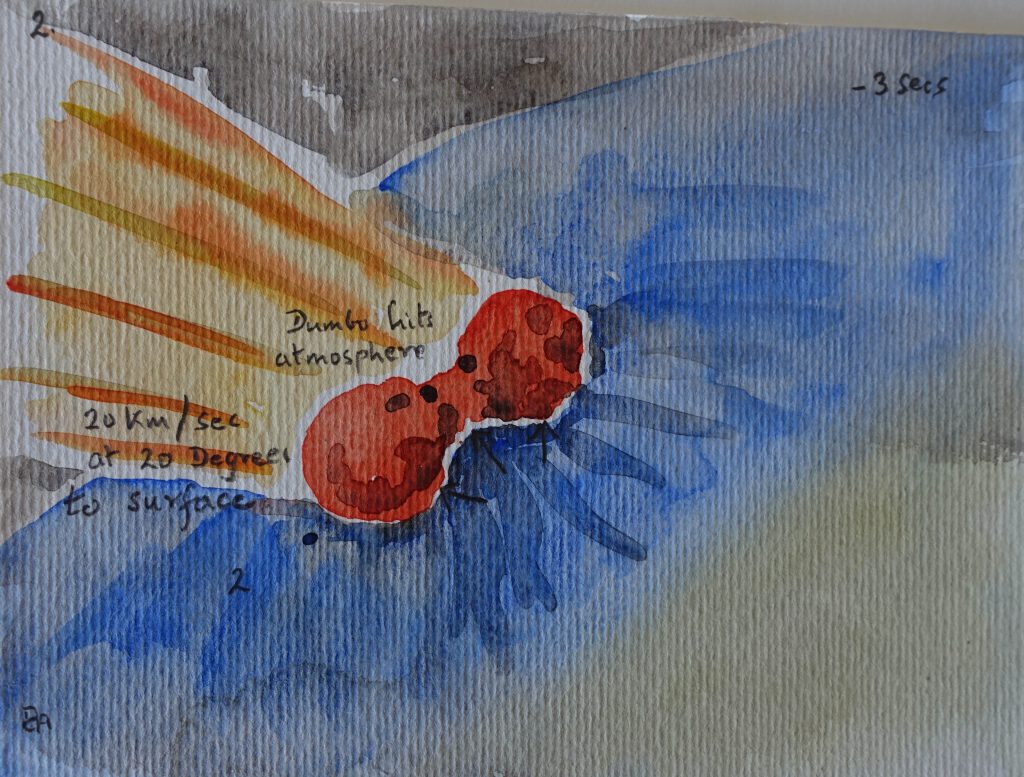

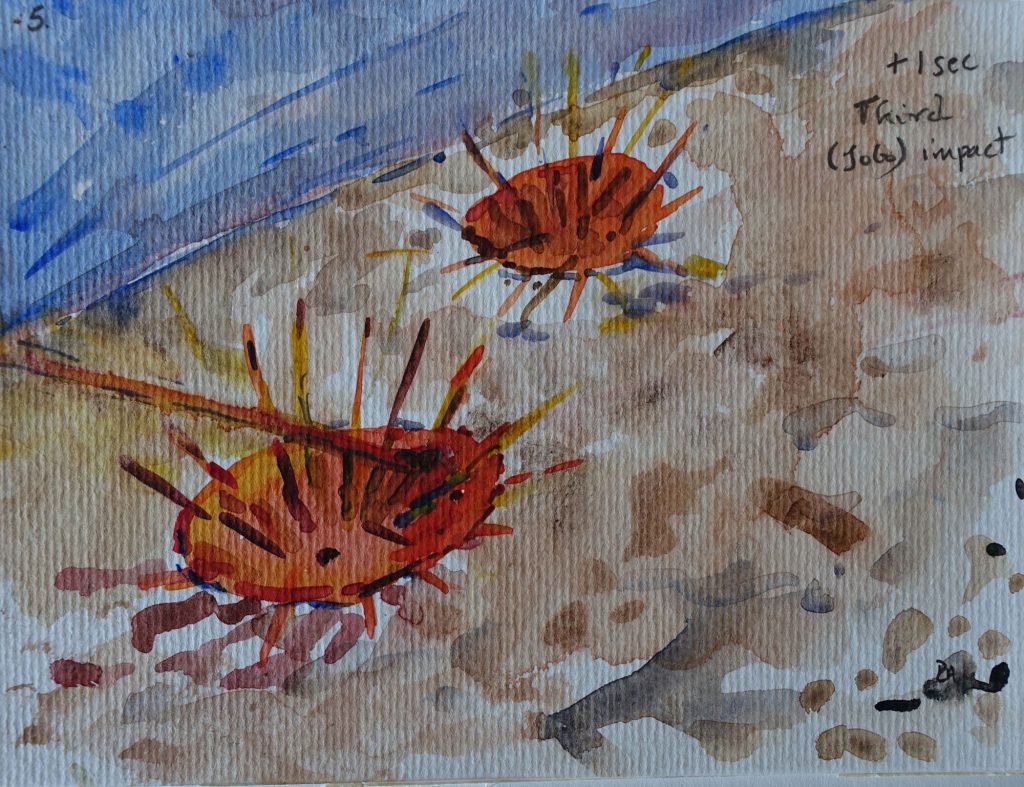
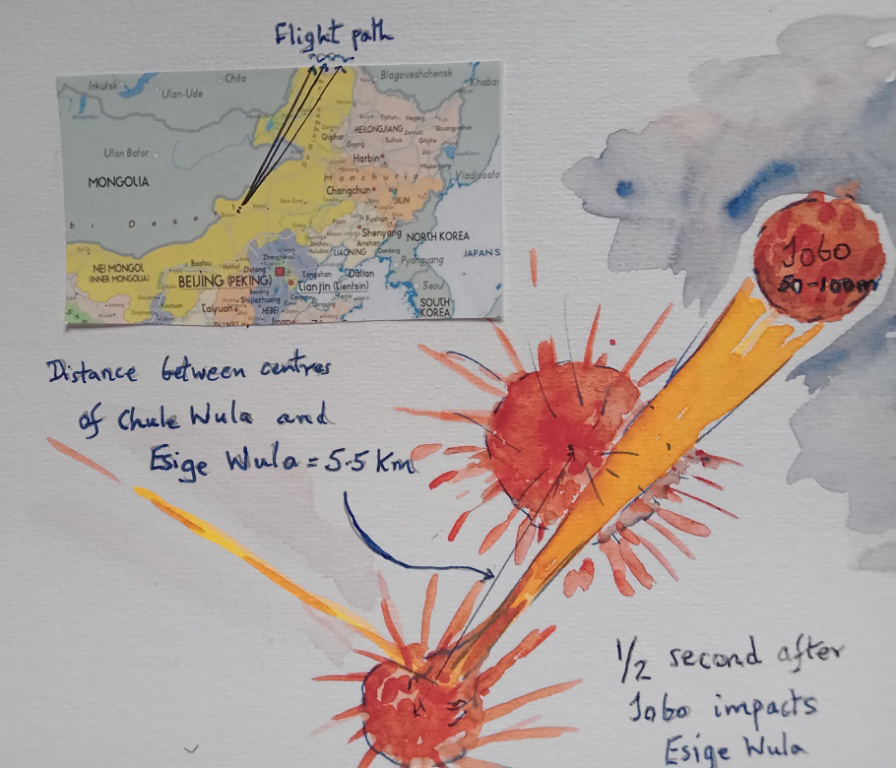


David’s work has been invaluable to me in my own ongoing research of natural glass that has been found all over the world. I find this article especially relevant, as I have seen evidence of a ‘hailstorm’ of smaller impacts in West Virginia. Natural glass has been found in several locations within 8 or 9 counties in West Virginia, and extending up to parts of Pennsylvania and Ohio. I applaud you David, for thinking outside the box, connecting these dots, and presenting such a well thought-out hypothesis. Cheers!
Thank you so much Rohana. I am fascinated by pieces of Hongshan glass that are on Ebay at present for next to nothing, just because they have not been seen before. And thank you for that extraordinary video of slabs of the glass being cut with a circular saw and shaped into executive glass balls on site. I believe these slabs must mark the main line of flight of ‘JoBo’, the bouncing deflected fragment (assuming my hypothesis is correct). The pieces that are emerging now via Ebay are quite different, but the iconography and surreal exploitation of colours is right. So my working hypothesis is that Jade and later Agate were being worked maybe for a thousand years before the impact. Once the glass had cooled, there was great pressure to carve the glass, and this was made easy by impact diamonds, which will have been all over the impact site.
A really interesting article and well worth a read. Thanks David.
Trained conventionally in Medicine as was David, I completely share his bewilderment at the total lack of Common Sense shown by our colleagues who seem unable to think ‘Outside the Box’. This also applies to Archaeologists. From Vitamin D3 to Ancient Glass his analyses, controversial though they may be, demand much further study.
Congratulations Prof.Anderson,
I have your publication on this most important discovery, you have worked tirelessly on this subject.
Sincerely, John Duncalfe, (Minor collector of Chinese artefacts of various periods)
I like this idea. What most people aren’t talking about is a string of pearls option, vis a vis Shumaker Levy 9. If a string of objects struck the earth, causing impacts on multiple sites near to the same latitude, some on ice, some on ocean and some on land, it would cause craters, air bursts, ice impacts and tsunamis.
Thanks, Patrick, for liking the idea. I really hope Antonio Zamora, whose work on the Carolina Bays and Nebraska Rainwater basins is seminal and impeccable, will pull holes in my calculations. There is no point in my putting this onto mainstream publications, because of the pervading need for peer-reviewers to be right all the time! But Patrick, please expand on why you like the idea!
Very interesting topic!!! Thank you.
Great stuff! I don’t see why more people aren’t jumping on this.
Thanks, Thomas, and yes, it is difficult to understand on many fronts. I think the Hongshan carvers were too prolific, and the tradition was that your collection was buried with you for the afterlife when you died, which was obviously a very good business model for the neolithic jade, agate and finally shui jing carving industry! Of course graves and their goods are no longer respected. I do find it difficult to understand why there is secrecy about the location of the massive glass quarries where the glass balls are being carved. If it lies on a line between the Southern crater and Hulinbuir this would be consistent with my ‘suborbital bouncing bomb’ hypothesis.
For anyone interested in the subsequent events, including megafauna extinctions that followed the Saginaw Bay subglacial explosion, I strongly recommend Paul A LaViolette’s book ‘Earth on Fire’ with its exhaustive catalogue of fire and water ‘myths’ from all over the world. Alas La Violette died in December 2022, but he was certainly an amazing renaissance-astrophysicist who ‘thought out of the box’on many fronts!
There is a mistake in the title I gave of LaViolette’s book. It is ‘Earth Under Fire’ not ‘Earth On Fire’… Subtitle ‘Humanity’s Survival of the Ice Age’.
He believed that the primary event was an explosion of our Galaxy’s core, which when it arrived after 23,000 years (we lie 23,000 light years from the galactic centre) unleashed a ‘galactic superwave’ barrage of cosmic rays and dust, which enveloped the sun in a dense nebula, and increased its heat output. He argues that decryption of zodiac constellation and Tarot lore reveals a coded warning to future humanity presumably by an ultra-intelligent astrophysicist top class of humans. I wonder whether such a high-speed barrage of rays and dust might not also have altered orbits of asteroids such as ‘Dumbo’.
What is going on now may be the psychopathic financial equivalent of a galactic superwave being imposed by a self-selected ignorant but greedy sub-species of humanity that has no empathy and is determined to destroy those that have enough left to care about those to follow.